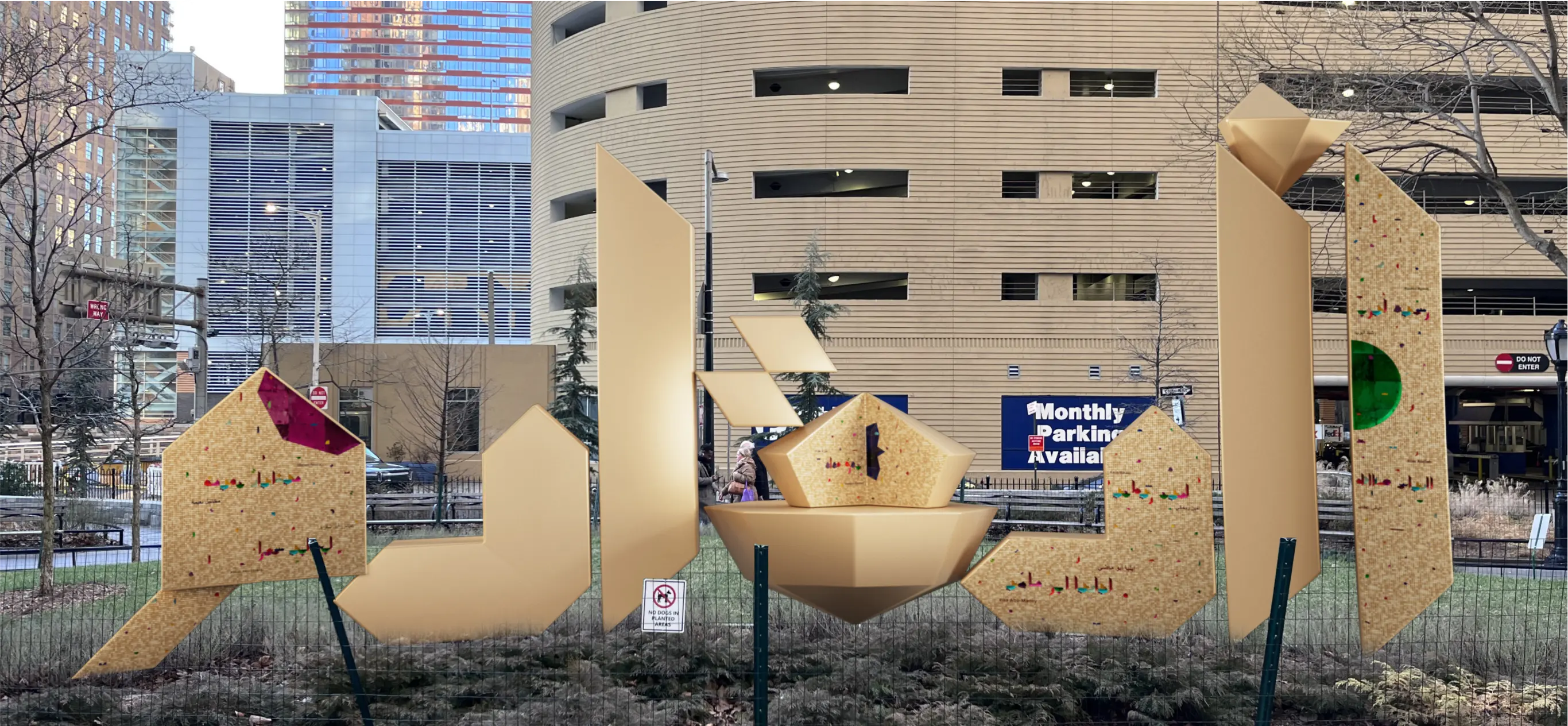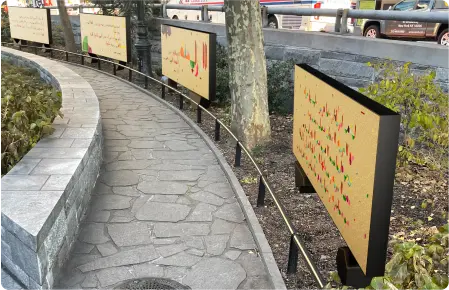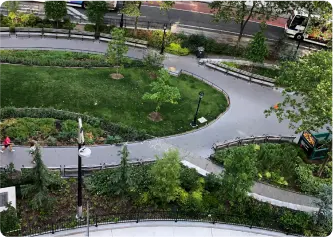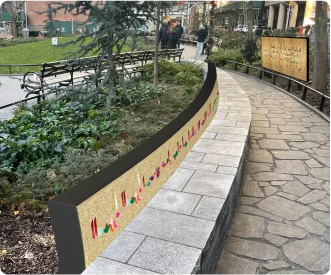Al Qalam: Poets in the Park
Al Qalam in brief
- An upcoming art installation commemorating the first Arabic-speaking community in the United States
- Soon to be located at Elizabeth H. Berger Plaza

Coming soon
Just steps away from this park, the first Arabic-speaking community in the United States took root. From 1880 to 1940, immigrants from present-day Lebanon and Syria made their home on Washington Street between The Battery and Albany Street. Known to New Yorkers as “the Syrian quarter,” “the Syrian colony,” or sometimes “Little Syria,” about 1500 “Syrians,” as they were called, lived on the east side of Washington Street. Their homes were crowded tenements that had been carved from single-family residences built in the early nineteenth century. Like their Irish, German, and Eastern European neighbors, the Syrians lived with no indoor plumbing and no access to fresh air or light. Infant mortality rates were tragically high. Yet the Syrians not only survived but thrived.
Most of them peddled when they first arrived, but by 1900, the street boasted Arabic shops, factories, and restaurants; four chapels; a Syrian school to teach adults English and children American history; and a half-dozen Arabic newspapers. Musicians and poets were respected members of the community, performing extemporaneously at weddings, baptisms, and social gatherings. Poetry was regularly published in the newspapers and by the early twentieth century, the Syrians had begun to publish books and magazines in both Arabic and English. Among these writers were Kahlil Gibran, Ameen Rihani, Nassib Arida, and Ilya Abu Madi, who were instrumental in the formation of a writers’ association called al Rabitah al Qalamiyah (The Pen Bond).





Formed first in 1916 and reconstituted in 1920, al Rabitah al Qalamiyah produced works of fiction, poetry, and visual art that imagined new ways of being Arab and American. Their most famous work, The Prophet by Kahlil Gibran, was published in 1923. Their writing and that of other members of the community played an important role in the literary renaissance in the Middle East, radically transforming the Arabic language, inspiring generations of later writers in the United States and the Middle East and creating innovative forms of Arabic literature. Women were not members of al Rabitah but were nevertheless respected members of the literary community, and two are included in this commemoration, Afifa Karam and Agabia Malouf.
Washington Street Historical Society has commissioned the artwork in Elizabeth H. Berger Plaza to celebrate the literary legacy of New York’s Arabic-speaking community. The Moroccan French artist Sara Ouhaddou has designed five mosaic panels displaying excerpts from their work in an abstract alphabet created by her. The sculpture on the edge of the central mound spells out the Arabic word, al Qalam, the Pen.